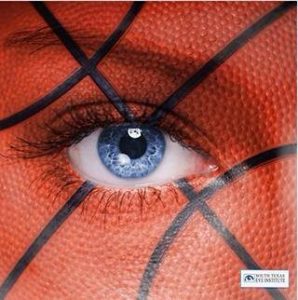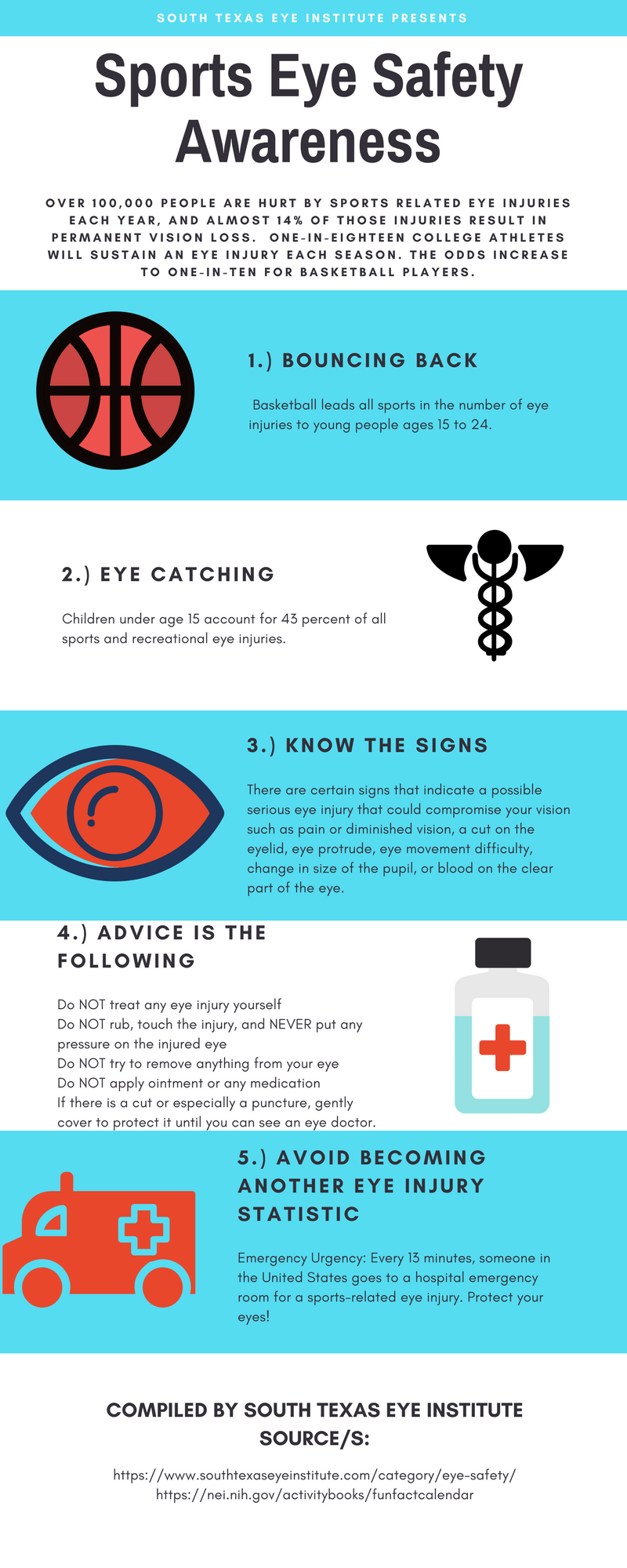 Over 100,000 people are hurt by sports related eye injuries each year, and almost 14% of those injuries result in permanent vision loss. That is a startling statistic, and a reason to pay attention if you or your children will be participating in any sports activity.
Over 100,000 people are hurt by sports related eye injuries each year, and almost 14% of those injuries result in permanent vision loss. That is a startling statistic, and a reason to pay attention if you or your children will be participating in any sports activity.
That includes all you weekend warriors, or those that think wearing sunglasses will protect you from any eye injuries.
April is Sports Eye Safety month so let’s review some simple precautions you can take to prevent eye injuries right now and throughout the year.
Warm Weather and Sports Eye Safety
Needless to say when the weather turns warmer more people are out enjoying the daylight hours and participating in all varieties of sports activities. A little precaution goes a long way. According to the National Institute of Health (NIH) baseball, basketball, tennis, racket ball and even paintball are among high risk sports that have the potential to cause trauma to the eye.
In the simplest of terms- use common sense. Glasses and contact lenses will not protect your eyes from a sports injury.
Preventing Eye Injuries in Young Adults
- One-in-eighteen college athletes will sustain an eye injury each season. The odds increase to one-in-ten for basketball players.7
- The following sports are considered a high-to-moderate risk of eye injury: Basketball, Baseball, Softball, Lacrosse, Hockey, Tennis, Soccer, Volleyball, Water Polo, Football, Air Rifle, BB Gun, Paintball, Boxing, Martial Arts, Cricket, Squash, Racquetball, Fencing, Badminton, Fishing and Golf.6
6-8 Vinger PF. A practical guide for sports eye protection. Phys Sports Med. 2000;28(6)
The majority of sports related eye injuries could have been prevented if the athletes wore appropriate certified protective eye wear. Coaches and physicians should insist that protective eye wear be part of the normal uniform of an organized sport. Unfortunately that is not always the case.
We teach athletes about the dangers of eye injuries and recommend that they wear eye gear. Constant reminder will go a long way toward making it common practice.
Polycarbonate eye gear is 10 times stronger and therefore more impact resistant than other types. For example, polycarbonate will protect against a .22 caliber bullet.
They can be worn directly over eye glasses and will not hinder the athlete’s vision. You can even have them made with the prescription set into them.
Learn more about sports eye safety tips, what signs to look for in an eye injury, and what to do and not to do if you injured your eye by reading the infographic below:

How to Recognize an Eye Injury
Sometimes the injury is not obvious. Even if there is no pain, you should be examined by an eye professional as soon as possible.
There are certain signs that indicate a possible serious eye injury that could compromise your vision. If you recognize them in yourself or another, seek medical help from South Texas Eye Institute.
- Pain or diminished vision
- A cut on the eyelid
- When it’s more difficult to move one eye compared to the other
- If one eye protrudes compared to the other
- A change in the size of the pupil
- Blood on the clear part of the eye
If any of these symptoms is present, you should see the care of an eye care professional.
What to Do (and NOT DO) if You Sustain an Eye Injury
In most cases, do NOT try to treat it yourself. Seek help from an ophthalmologist or go to an emergency room for treatment!
General advice is the following:
- Do NOT treat any eye injury yourself
- Do NOT rub, touch the injury, and NEVER put any pressure on the injured eye
- Do NOT try to remove anything from your eye
- Do NOT apply ointment or any medication
If there is a cut or especially a puncture, gently cover to protect it until you can see an eye doctor.
If you sustain a blow to the eye, you can gently apply a cold compress to prevent swelling, but do not put any pressure on the injury. If the eye becomes bruised, turns black and blue, or if there are visual issues, immediately seek out the care of an ophthalmologist.
Even a slight blow to the eye can cause serious damage to your vision.
By the Numbers
One-in-eighteen college athletes will sustain an eye injury each season. The odds increase to one-in-ten for basketball players.7
Imagine getting hit by an elbow and sustaining an eye injury on the basketball court, or by a baseball thrown at 95 mph and being out of the game!
Don’t be part of those statistics. Recognize sports eye injuries and know what to do. Practice sports eye safety and protect your eyes and your vision.
Contact South Texas Eye Institute if you have sustained an eye injury or have questions about eye protection, or call
210.692.1388

